Language
- English
- Español
- Français
- Italiano
- Português
- Deutsch
- Nederlands
Currency
- AUD Australian Dollar
- CAD Canadian Dollar
- EUR Euro
- GBP Pound Sterling
- USD US Dollar
- ZAR Rand

Welcome to the best, and largest, park in Zimbabwe. Just how big is Hwange National Park? A whopping 15 000 km² of diverse landscapes, filled with interesting flora, and teeming with exciting wildlife waiting to be discovered. Its elephant herds are particularly notable, sitting between 45,000 and 60,000, second only to Chobe National Park. But this incredible reserve is also lauded for its predator population – from the regularly spotted lion, leopard, and cheetah to the nocturnal civet, serval, and bat-eared fox.
Located on the edge of the Kalahari Desert, Hwange has a semi-arid climate with marked seasonal changes. The best time to visit Hwange National Park therefore depends on what you wish to see – from dry, winter months (May to October) where wildlife congregate around waterholes to the wetter green season (November to April), which highlights the incredible bird watching opportunities and newborn population. With Victoria Falls nearby, Hwange National Park is the perfect one-stop or combination destination.
Here are our top five reasons you should travel to Hwange National Park:
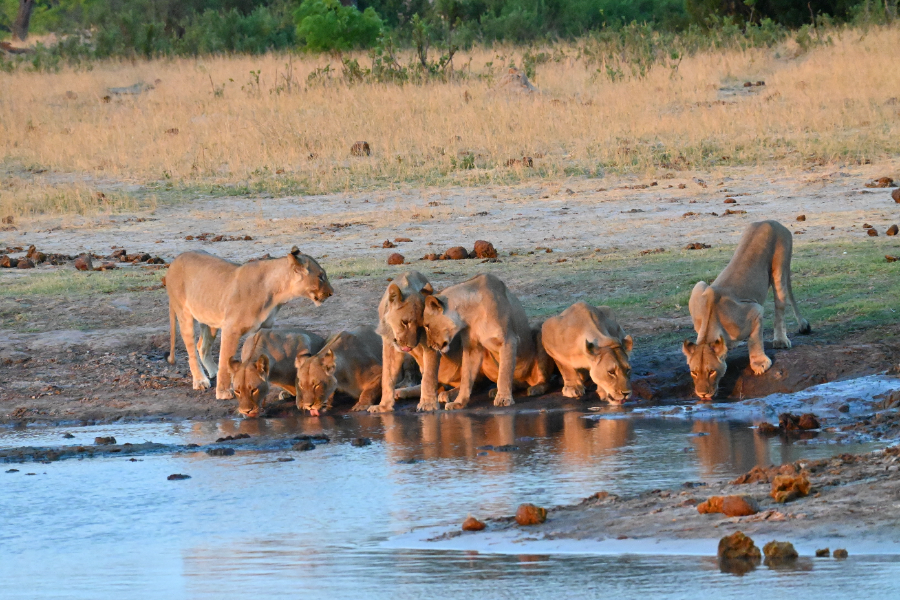
Given the sheer size of the park, the variety of wildlife to be seen is just as vast – over 100 species of mammals roam the land while 400 odd species of birds soar through the sky. While its vast elephant population makes up a substantial portion of the biome, other Hwange National Park wildlife include sable and roan antelope, zebra, impala, kudu, wildebeest, giraffe, and buffalo to name a few. It is also home to one of the most prolific populations of wild dogs on the continent, thanks to the Painted Dog efforts.
Hwange offers unique sightings of less common wildlife, such as the brown hyena, a smaller, desert-adapted version of the well-known spotted hyena. Although not endemic to the area, Hwange National Park is one of the best places to see them. Keep an eye out for the sneaky aardvark, porcupine, and pangolin as they are notoriously tough to spot.
Although Hwange could be considered a Big 5 reserve, the local rhinos are protected by the Community Rhino Conservation Initiative and are not currently roaming the reserve. Their protection detail, The Cobras, work night and day with Malinois companions to ensure the safety and well-being of the rhinos. Cobras are local community members who have undergone extensive training to hone their skills for rhino protection, patrolling for snares, wildlife management, firefighting, environmental education, and human-wildlife conflict resolution.
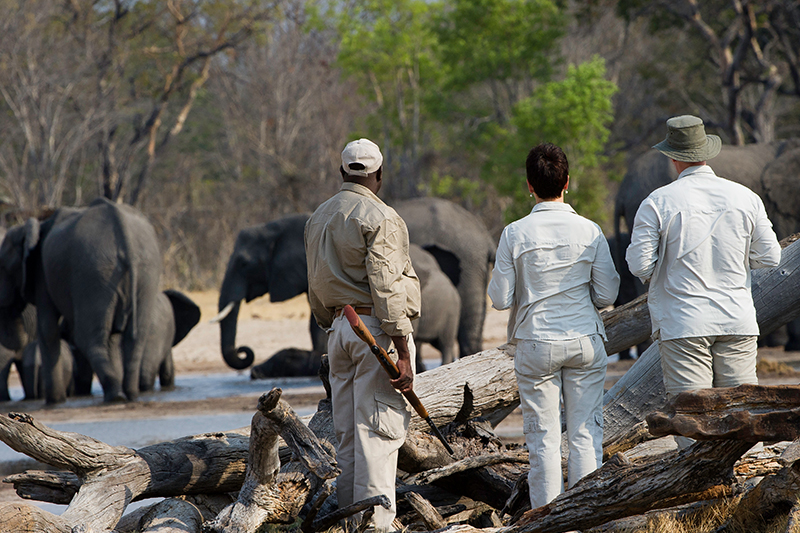
A guided walking experience provides an entirely different perspective on a Hwange National Park safari – discover small details courtesy of your knowledgeable guide, track wildlife, and enjoy an immersive trek through the bush. Typically, the nature of these will vary from camp to camp and lodge to lodge – some being a more in-depth exploration of your surroundings, which often make them longer, and others a shorter overview. If this features as a bucket list experience, this is where you want to be!
Although bush walks are possible year-round, the dry winter months make for the best sightings and walking safaris – namely, June to October. As the surface water begins to dwindle and the vegetation decreases, the wildlife sightings increase. Fortunately, Hwange National Park features several permanent waterholes, which wildlife become especially reliant on during the depths of the dry season. While this makes for fantastic sightings, the elevated temperatures can be uncomfortable, especially for a walking safari. Head out from the end of June to the end of August to enjoy the best combination of temperature and sightings.
Hwange’s Best Safari Camps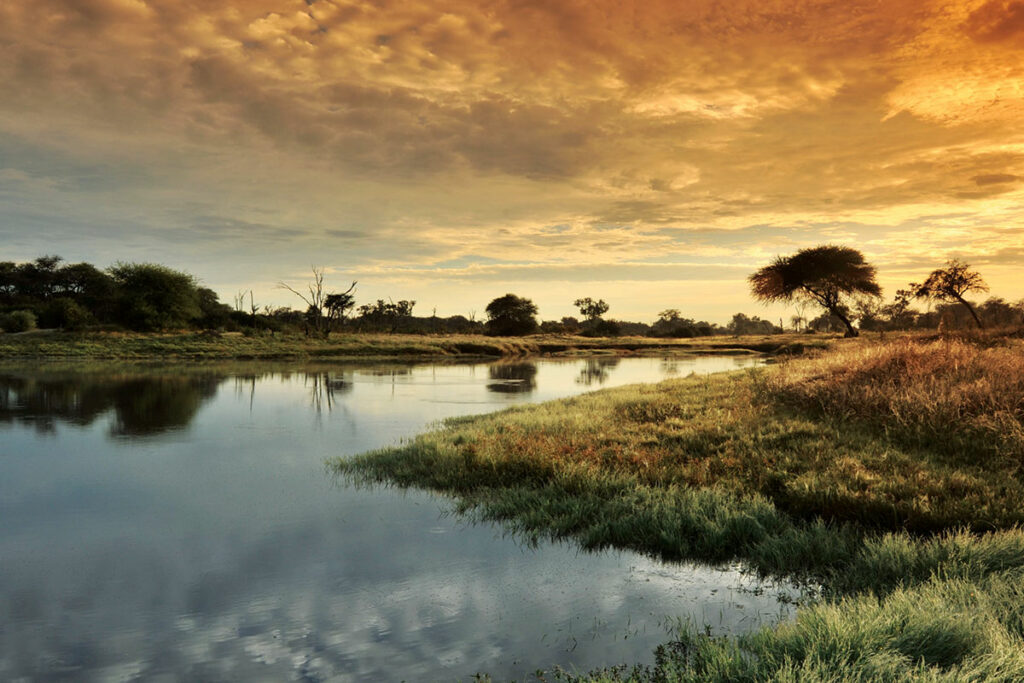
Hwange National Park in Zimbabwe sits right on the edge of the Kalahari, which has created unique, adapted wildlife, which aren't found in other areas of Zimbabwe, such as the brown hyena. Fun fact: Hwange as a park would be a non-starter without the 60 odd waterholes – many of which are manmade and pumped throughout the year – that give life to the area, even when the natural surface level water dries up.
Its semi-arid climate makes for marked seasonal changes and stark contrasts between summer and winter – from the dry, hot winter, to the wet summer months where the dry plains and vegetation burst into life. For all twitcher's, green safari season – December to March – is the best for bird watching in Hwange thanks to the migrating species and blooming vegetation.
When traversing Hwange, expect to see the incredible granite koppies and mopane woodlands in the north, which contrast to the sparse, desert scrubland further south. With its contrasting landscapes and diverse wildlife, the park is perfect for professional and amateur photographers alike – capture vast herds of elephants stomping through the water and the dark silhouette of birds against a vibrant African sunset.
The Ultimate Guide to a Zimbabwe Safari
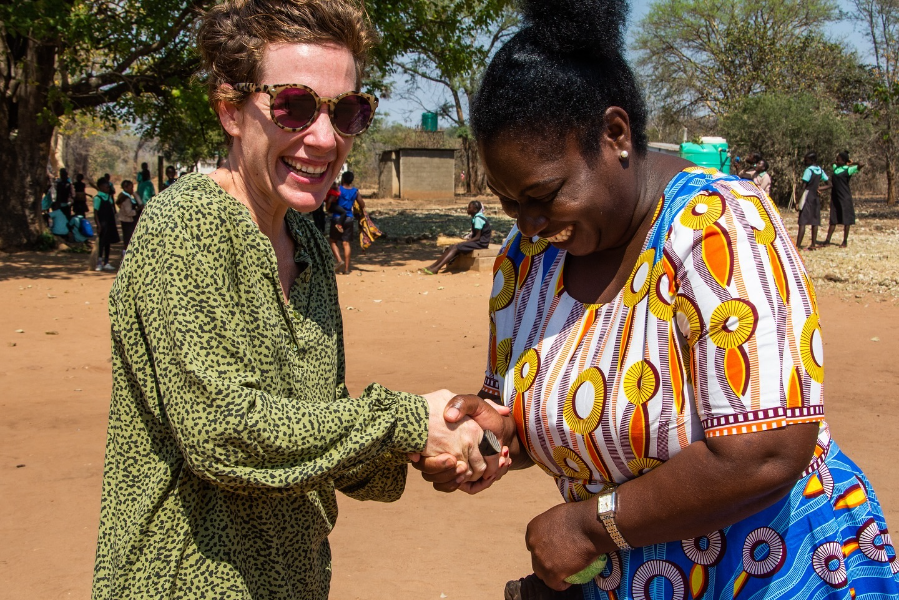
African Bush Camps plays an active role in positive impact travel in Hwange and Zimbabwe as a whole. They are currently working on several projects to empower local communities and promote accessible education, which are powered by fundraising initiatives.
Two groups of women have been upskilled and brought into groups that create handmade goods – the Thandanani Sewing Group make gorgeous, printed bags, robes, clothes, and placemats. Similarly, the Vukani Group Project is a community of women who make beautiful, handcrafted bracelets, napkin rings, and bracelets from recycled magazines. The purpose being to reuse and remake items from something that would otherwise be thrown away. Both sets of goods are available at the ABC trading post.
The foundation has also aided in the establishment of the Mambanje Community Garden; established to quell food scarcity in the area by equipping, empowering, and enabling the community to produce crops. With the addition of a borehole and solar power, the once small garden has grown to provide subsistence produce as well as an excess that can be sold to generate an income.
Positive Impact Safaris
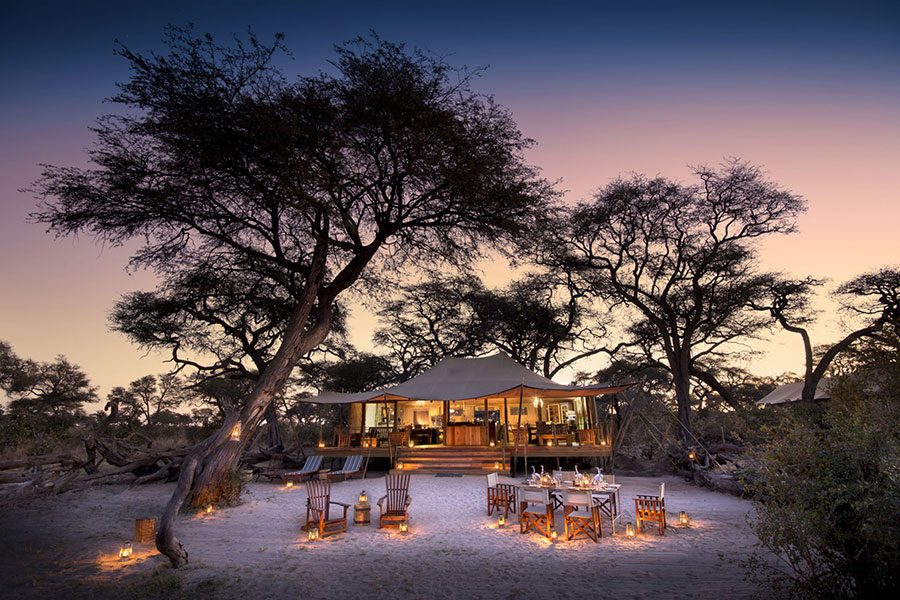
Hwange National Park offers a range of accommodation options from ultra luxurious safari lodges to more traditional tented camps. Fortunately, there are ample choices suited to every taste, budget, and trip type. Don't shy away from the idea of a tented camp, they often offer a more immersive, secluded experience, with some of the best scenery. On the other hand, Hwange lodges can be exquisite examples of modern, opulent accommodation seamlessly integrated into their wild surroundings. It's all up to your desired experience.
While activities vary from place to place, daily game drives are a standard offering and some even offer night drives. Some lodges offer walking safaris and guided walks, while others may offer bird watching and cultural tours – or all the above!
With its proximity to Victoria Falls, a day trip by charter flight, or an overnight sojourn provides guests with the best of a safari sabbatical and a chance to explore one of the Seven Natural Wonders of the World.
Explore Hwange Accommodation
Contact one of our African Safari Experts to help you curate an unforgettable trip to Hwange National Park and beyond.
Help Me PlanBird watching
Wildlife and safari